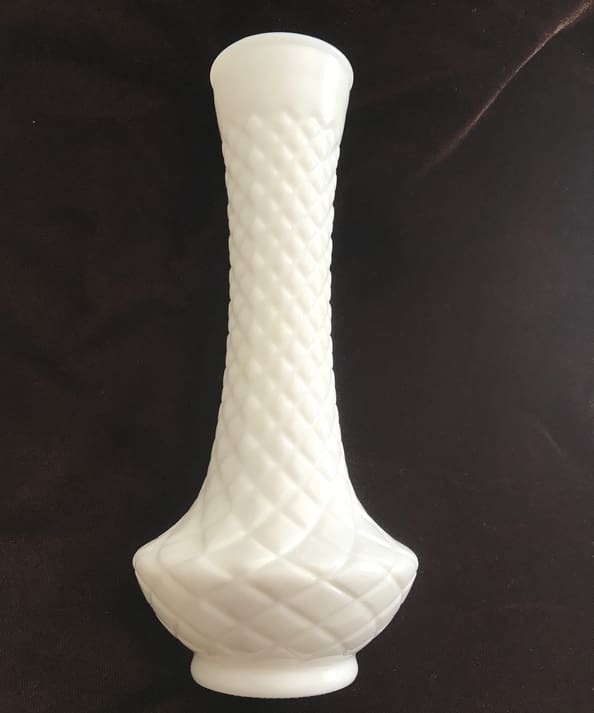 Vintage milk glass, most likely you’ve seen it before, probably somewhere amongst your parents or grandparents home decor.
Vintage milk glass, most likely you’ve seen it before, probably somewhere amongst your parents or grandparents home decor.
It’s an opaque or translucent, milky white or colored glass, which has been a popular collectible and home decor item for centuries.
As enthusiasts of vintage decor and collectibles, we find milk glass to be quite interesting because of its rich history, variety, and the vintage aesthetic it brings to practically any setting.
In this article, we’ll take a brief look at the origin of, milk glass and how it was made, we’ll look at variations, popular brands, makers and sought after pieces. You’ll also see how you can decorate your spaces with some vintage milk glass design ideas for your modern home…Let’s get started!
Origins and a Bit of Vintage Milk Glass History
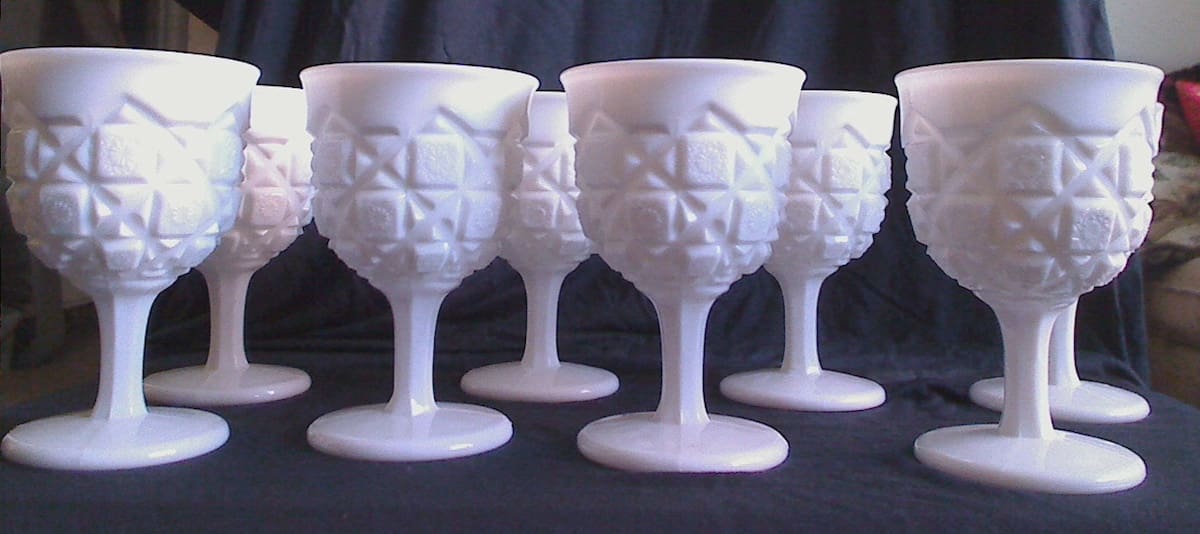
It is said that milk glass dates back to the 16th century, first produced in Venice, Italy one of the most famous glassmaking cities in the world. It was initially known as “opal glass” due to its opalescent quality. The early versions of milk glass were mostly used in decorative arts as a cheaper alternative to porcelain, which was highly prized but expensive and less accessible to the average population.
The popularity of milk glass soared during the Victorian era of the 19th century, especially in England and America. This period saw a huge spike in the production of milk glass decor and functional items, from vases, bowls, and plates to cosmetic containers, and lighting fixtures.
The Victorians associated white with purity and cleanliness, which contributed to milk glass becoming a favorite material for household items and home decor objects.
How Milk Glass Was Made

Milk glass gets it look by adding opacifiers to glass. The primary opacifiers used are bone ash, tin dioxide, and fluoride compounds. These materials are mixed with glass sand before melting, resulting in the opaque or translucent white finish of milk glass. Over time, the recipes and processes have evolved, allowing milk glass to be produced in a variety of different colors, including pink, blue, green, and black, although white remains the most iconic.
Milk Glass Variations and Patterns
As you can see, vintage milk glass comes in a variety of patterns and designs that reflect the aesthetic preferences of different periods. Some of the most popular patterns from the late 19th and early 20th centuries include the “Grape and Cable,” “Hobnail,” and “Shell and Jewel.“
 The Hobnail pattern, characterized by raised bumps on the surface, is loved by collectors for its unique look and aesthetic appeal.
The Hobnail pattern, characterized by raised bumps on the surface, is loved by collectors for its unique look and aesthetic appeal.
The variations in milk glass aren’t limited to patterns and colors, they also include the finish, which can be glossy or matte. The choice of finish often depends on the item’s intended use and the period in which it was produced.
For instance, earlier milk glass pieces tend to have a more glossy finish, while later pieces, particularly from the mid-20th century, might have a matte finish to mimic porcelain or bisque.
Famous Milk Glass Makers
- Fenton Art Glass Company: Founded in 1905 by brothers Frank and John Fenton in West Virginia, Fenton Art Glass Company is synonymous with American-made milk glass. The company initially gained fame for its hand painted glassware and introduced the Hobnail pattern to milk glass, which became an instant classic. Fenton’s pieces are known for their innovative designs and exceptional quality.
- Westmoreland Glass Company: Established in Pennsylvania in 1889, Westmoreland specialized in high-quality milk glass items in the early 20th century. The company’s pieces are renowned for their intricate lace edges and detailed patterns, such as the “English Hobnail” and “Grape and Cable.” Westmoreland milk glass pieces are highly sought after by collectors for their elegance and craftsmanship.
- Imperial Glass Company: Operating in Ohio from 1901 until it closed in 1984, Imperial Glass made a significant contribution to the milk glass market. Their milk glass line, often marked with the Imperial cross logo, included a wide variety of items, from vases and bowls to plates and figurines. Imperial’s “Grape” pattern is among its most celebrated designs.
Rare and Collectible Vintage Milk Glass
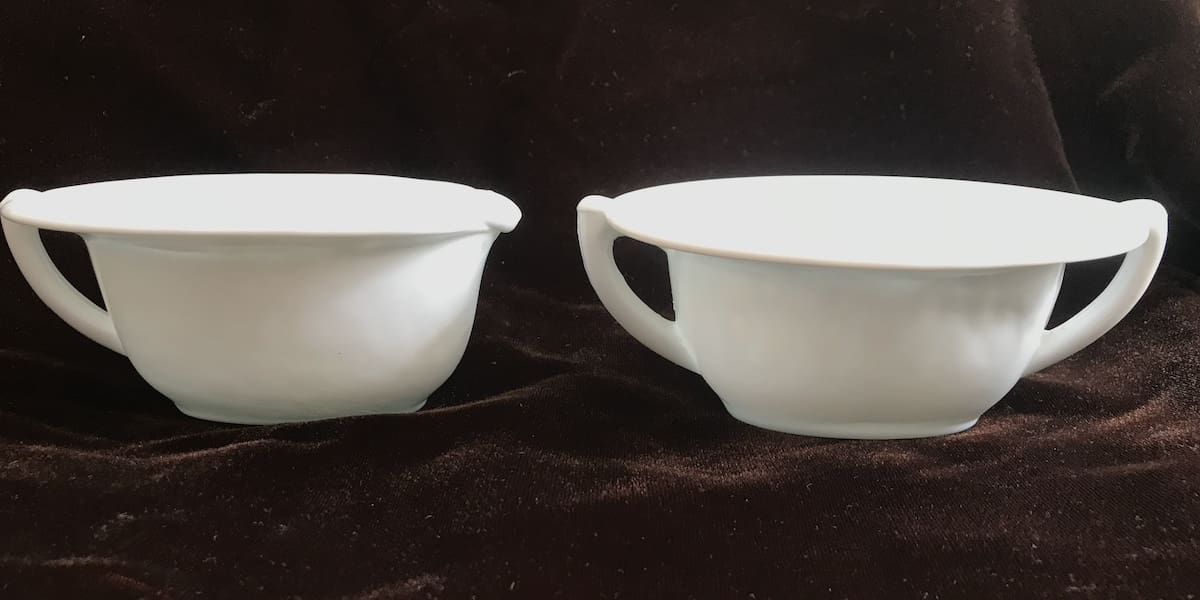
As with almost all vintage decor, certain pieces are particularly prized for their rarity, design complexity, or historical significance:
- Pre-20th Century Milk Glass: Items from the 16th to the 19th century are extremely rare and valuable, especially those with provenance or linked to notable events or figures. Early Venetian milk glass, for instance, is highly coveted by museums and serious collectors alike.
- Figurines and Novelty Items: Milk glass figurines or novelty items, such as those shaped like animals, fruits, or characters, produced in limited quantities are rare finds. These pieces often reflect the cultural and social trends of their time, making them interesting historical pieces as well as collectibles.
- Unique Patterns and Colors: Milk glass items other than the traditional white color, like those with shades of pink, blue, or green, are considered rare. Similarly, items with unusual patterns or those made for a limited time can also be highly collectible.
Milk Glass Artists and Designers
While many milk glass pieces were produced anonymously or under the brand name of large manufacturers, there are a few artists and designers that have been recognized for their work with milk glass:
- Jacob Rosenthal: A designer for the Fenton Art Glass Company, he created some of the most iconic milk glass patterns of the mid 20th century, including variations of the Hobnail pattern. His work helped to bring back interest in milk glass during the 1940s and 1950s.
- Charles Lotton: Although more famously known for his work with iridescent glass, Lotton also experimented with milk glass in his career, producing pieces that blended traditional milk glass techniques with his unique style. These limited-edition pieces are highly prized for their beauty and craftsmanship.
- George Sakier: A designer for the Fostoria Glass Company, Sakier brought a modernist approach to milk glass in the 1930s and 1940s. His designs were ahead of their time, featuring sleek lines and minimalistic patterns.
Collecting Vintage Milk Glass
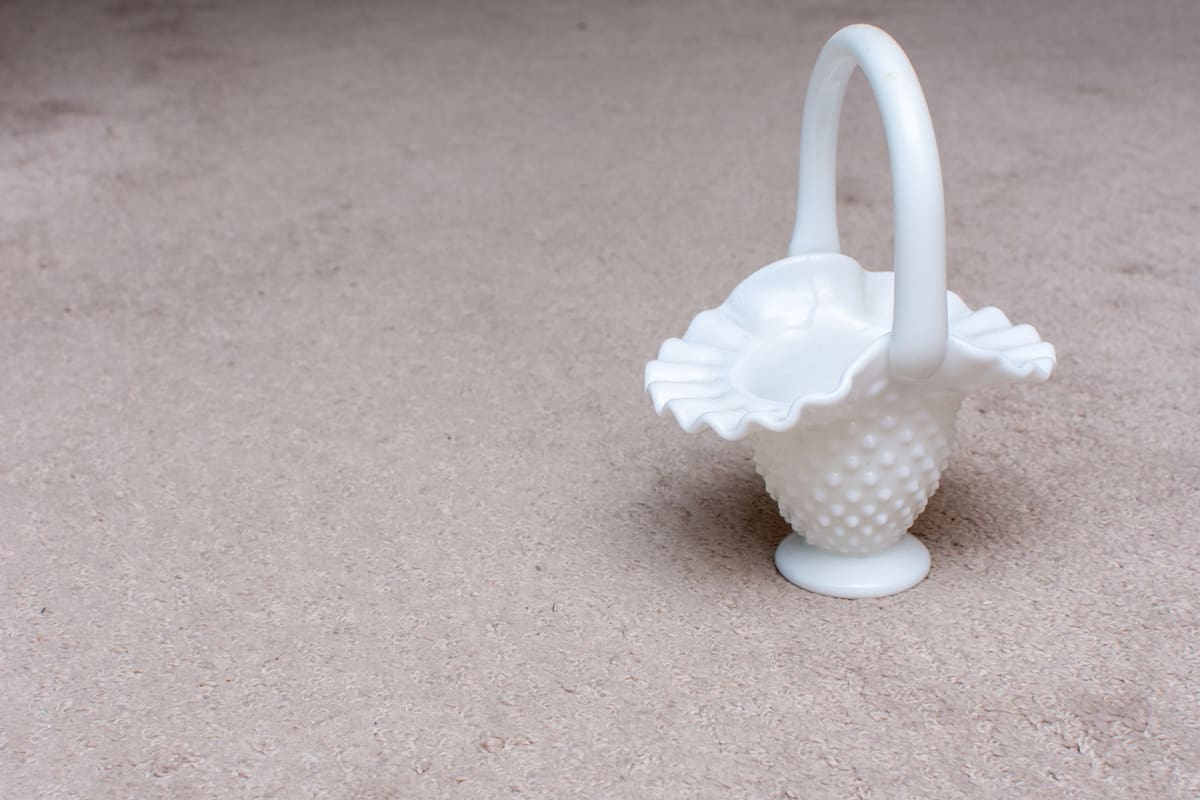
Collecting milk glass can be a rewarding hobby for collectors of vintage and antique decor items. However, milk glass collecting requires some knowledge and vigilance. Here are a few tips for aspiring collectors:
- Research: Understanding the history, manufacturers, and patterns of vintage milk glass is crucial. Familiarize yourself with the marks and labels of renowned manufacturers, such as Fenton Art Glass, Westmoreland Glass, and Imperial Glass, to authenticate pieces accurately.
- Condition: Examine items for chips, cracks, and repairs. The value of milk glass pieces can be significantly affected by their condition. Pieces in pristine condition are more desirable and valuable.
- Rarity and Uniqueness: Seek out rare patterns, unusual shapes, or colors other than white. These pieces can be more valuable and really make your collection stand out.
- Display: Consider how you will display your collection. Vintage milk glass can be used to create stunning visual displays, enhancing the aesthetic of any room. Mixing different patterns and colors can add depth and interest to your display.
Décor Ideas For Your Vintage Milk Glass

Incorporating milk glass into your decor offers a blend of elegance and versatility that can complement a wide range of design styles. Milk glass pieces, with their opaque finish and variety of patterns, can serve as focal points or as subtle accents to add a vintage aesthetic to any room. Here are some tips, inspiration, and ideas for decorating your spaces with beautiful vintage milk glass.
Embrace a White-on-White Palette
Vintage milk glass can look absolutely stunning in a white-on-white decor scheme. Arrange milk glass vases, bowls, and decorative items on white mantels, shelves, or tables to create a serene and cohesive look.
This monochromatic approach highlights the texture and patterns of milk glass pieces, making them stand out while contributing to a tranquil, airy ambiance. For added depth, incorporate different shades of white and textures in your linens, rugs, and furniture.
Create a Stunning Centerpiece
A collection of vintage milk glass vases of varying heights and shapes can be combined to create a captivating centerpiece for your dining table, coffee table, or sideboard. Fill some vases with fresh flowers, while leaving others empty to appreciate their shapes and details. This arrangement can be easily updated for seasons or special occasions by changing the floral elements, adding versatility and interest to your decor.
Mix and Match with Other Vintage Decor Elements
Milk glass pairs beautifully with other vintage materials and textures, such as wood, brass, and lace. Use milk glass pieces as part of a larger vintage vignette on a console table or bookshelf. For instance, display a milk glass lamp on an antique wooden table, or place milk glass bowls and plates on top of a vintage lace tablecloth for a layered, eclectic look. Mixing materials and eras adds depth and character to your space.
Highlight with Lighting
Vintage milk glass lighting fixtures such as pendant lights, table lamps or chandeliers can add a soft, diffused light to any room to create a warm and inviting atmosphere. These pieces can work as functional lighting and as artful decor elements. Look for fixtures with interesting shapes or patterns to make a statement, whether it’s in the kitchen, living room, bedroom or even the bathroom.
Vintage Milk Glass as Functional Home Decor
Beyond the decorative appeal, milk glass items can be repurposed for practical uses around your home. You can use milk glass cups or mugs as holders for makeup brushes or pens, dishes for jewelry, or larger bowls and vases for fruit or serving dishes during gatherings. This approach adds a touch of vintage charm to everyday items while keeping your space organized and stylish.
Create a Milk Glass Gallery Wall
If you love to collect milk glass plates or wall plaques, consider creating a gallery wall. Arrange the pieces in a blended pattern or go more freestyle. This can create a visually striking conversation starter, showing the variety and beauty of your vintage milk glass collection.
Introduce Color with Milk Glass
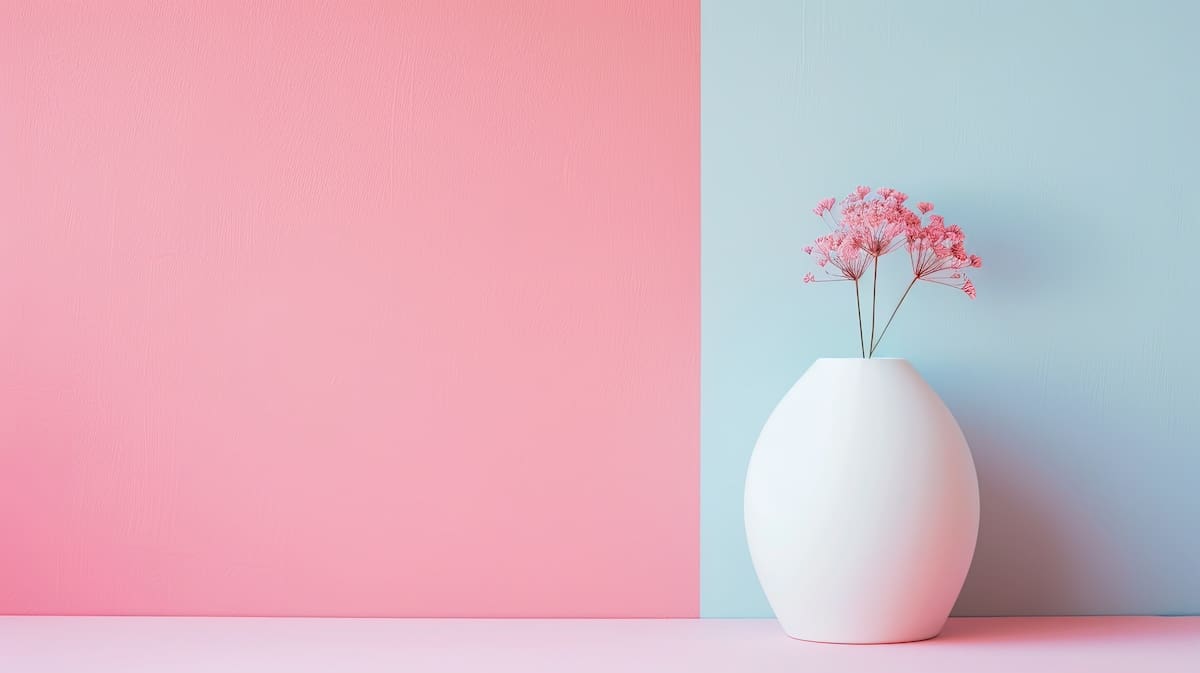
While white is the most common color for milk glass, don’t shy away from colored milk glass pieces. Soft pastels or bold hues can add a pop of color to your decor, serving as accent pieces that enliven your space. A single piece on a mantle or a collection of colored milk glass displayed in a white cabinet can offer a surprising and delightful contrast.
Incorporating milk glass into your interior design allows you to create unique, personal spaces that reflect your style and preferences. Whether you’re drawn to the simplicity and elegance of white milk glass or the charm of vintage mixed material vignettes, vintage milk glass offers endless possibilities for enhancing your home’s decor.
Memories Ago may have just the perfect vintage milk glass decor piece you are looking for as well as wide a variety of vintage decor to mix and match. Visit our store to see our current selection of vintage milk glass decor.
Share your favorite milk glass piece or show us how you’ve incorporated milk glass into your favorite spaces, we would love to see!
